This month, the Chicago History Museum (CHM) is giving fans of Kukla, Fran and Ollie a gift by putting the beloved show on the big screen in the Robert R. McCormick Theater. From December 26 to 31, visitors can enjoy a full week’s worth of episodes from December 1951.
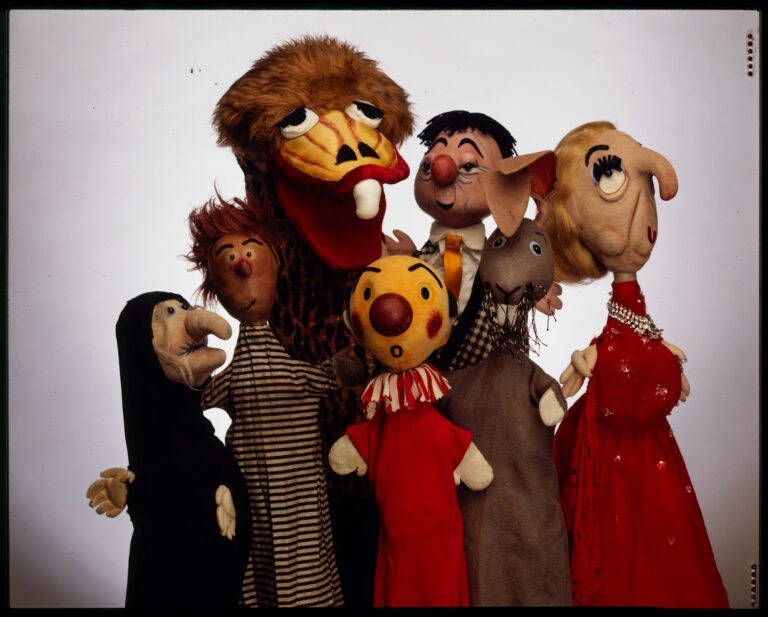
Undated photograph of hand puppets from Kukla, Fran and Ollie. From left: Beulah Witch, Cecil Bill, Ollie, Kukla, Colonel Crackie, Fletcher Rabbit, and Madame Ophelia Ooglepuss. CHM, ICHi-069817
But who were Kukla, Fran, and Ollie and what was their show? Television viewers of a certain age know the answers, perhaps wistfully recalling the puppets Kukla, a clown, Ollie, full name Oliver J. Dragon, and their human pal Fran Allison who visited their homes regularly from 1947 to 1957 via the beloved TV program Kukla, Fran and Ollie. Kukla, Ollie, and their various friends, collectively known as the Kuklapolitans, were the creation of Chicago native Burr Tillstrom, and the program was one of a group called the Chicago School of Television.
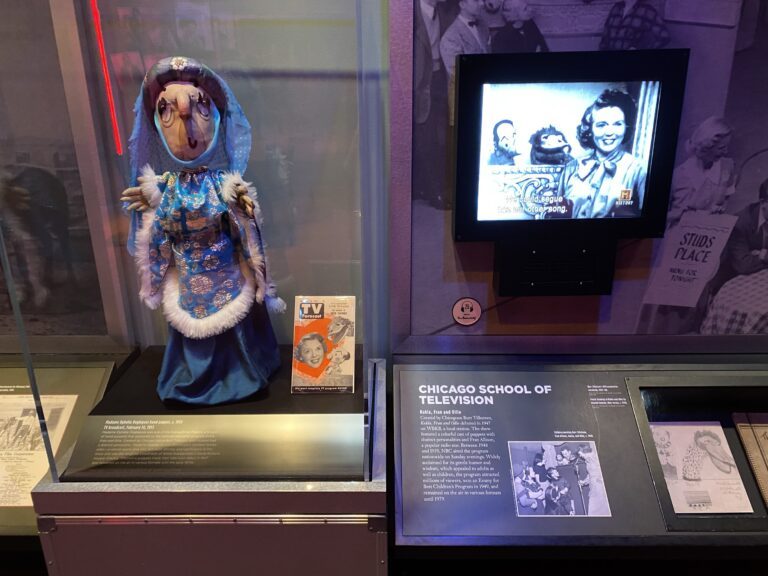
A Madame Ophelia Ooglepuss puppet on display in the Chicago School of Television section of Chicago: Crossroads of America, December 2023.
Several shows produced in Chicago during the early years of television ended up being broadcast nationally and made a lasting impact on the medium. What distinguished these shows from those produced elsewhere was a sense of spontaneity, combined with an intimacy and authenticity, that made them feel like an extension of daily life. Chief among the Chicago School was Kukla, Fran and Ollie. It might seem peculiar from our contemporary perspective to describe a program whose main characters were puppets as realistic, but Kukla and Ollie possessed human virtues and vulnerabilities and gave expression to them in ways that resonated with viewers young and old (Tillstrom always maintained it was not a children’s show but rather a show that appealed to children as well as adults).
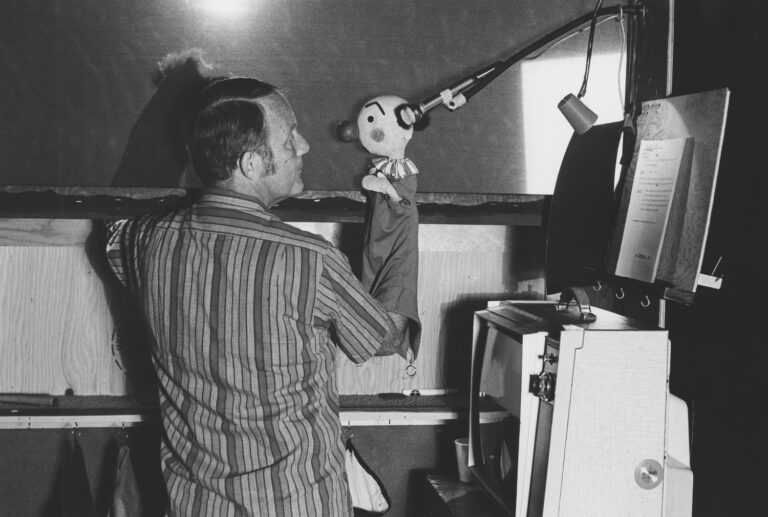
Undated photograph of Burr Tillstrom behind the set of Kukla, Fran and Ollie. CHM, ICHi-051913
Last year I gave myself the gift of research. I was working on an event for the Museum to mark the 75th anniversary of the broadcast of the first episode of Kukla, Fran and Ollie (then titled Junior Jamboree), on October 13, 1947, on WBKB (today’s WLS-TV). CHM is home to the surviving episodes of the show, currently being digitized and made available courtesy of Kukla.Tv on YouTube, as well as the Kuklapolitans themselves and various props, but I went to the Abakanowicz Research Center (ARC) to explore the Burr Tillstrom papers, a treasure trove of production materials, photographs, and fan appreciation.
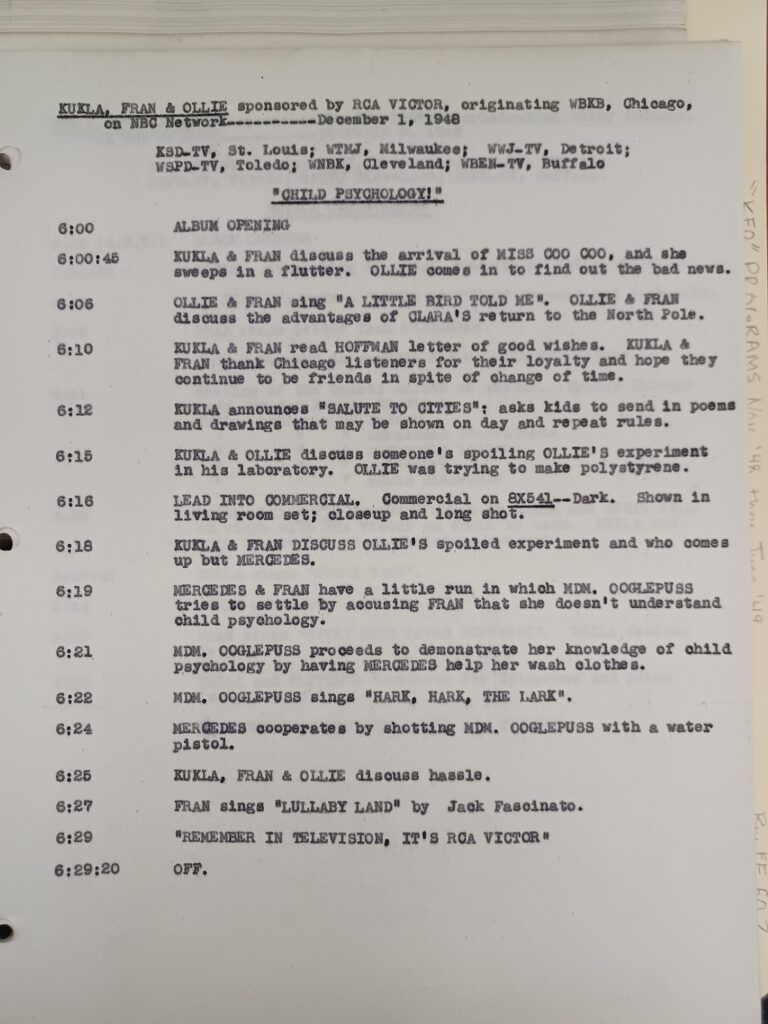
A “script” for the December 1, 1948, episode of Kukla, Fran and Ollie. Burr Tillstrom papers (Chicago History Museum), Box 78 (Box FF 78.1).
Within the papers, I discovered original sheet music, lighting plots, and set designs, all of which shaped the 75th anniversary event. The show was improvised before the camera, with the “script” of each episode being typed out by Tillstrom’s assistant as it unfolded in real time, all of them preserved in the archive. At the start of my research, I was aware of pioneering producer Beulah Zachary (for whom Beulah Witch was named) but learned in the papers that WBKB did not have a “cameraman” but a camerawoman named Rae Stewart.
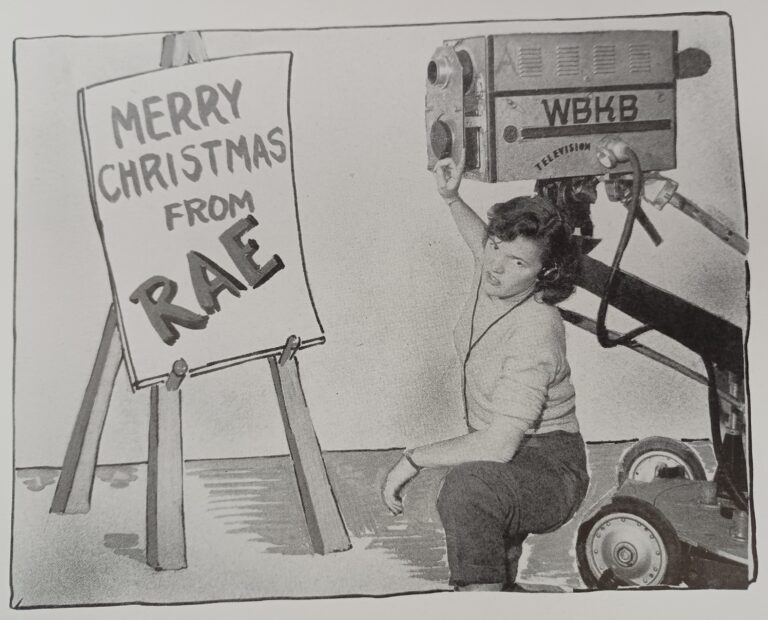
An undated graphic featuring WBKB camerawoman Rae Stewart. Burr Tillstrom papers (Chicago History Museum), Box 6 (Box FF 6.8).
What stuck with me the most, however, was the palpable love from fans of the program, preserved in handmade cards, personal letters, and Western Union telegrams. One thick binder contained viewer responses to a single episode, the final one that aired in August 1957.
In that binder, I found a letter from an older viewer, one who had been suspicious of the newfangled television until she and her husband discovered Kukla, Fran and Ollie and began to watch it daily. “After my husband died a year ago,” she wrote, “you were my real friends. Because you came, I did not need to eat dinner alone; and your gentleness and non-raucous fun made you such welcome dinner guests.” She concluded, “I knew, too, that I could count on you to be as understanding of me and my loneliness as you are of each other’s problems and those of the other Kuklapolitans.” For this viewer and many others, Tillstrom’s creations were real.
In the upcoming year, stop by the ARC, which is free to visit, and get hands-on with Chicago’s history. You never know what you’ll discover.